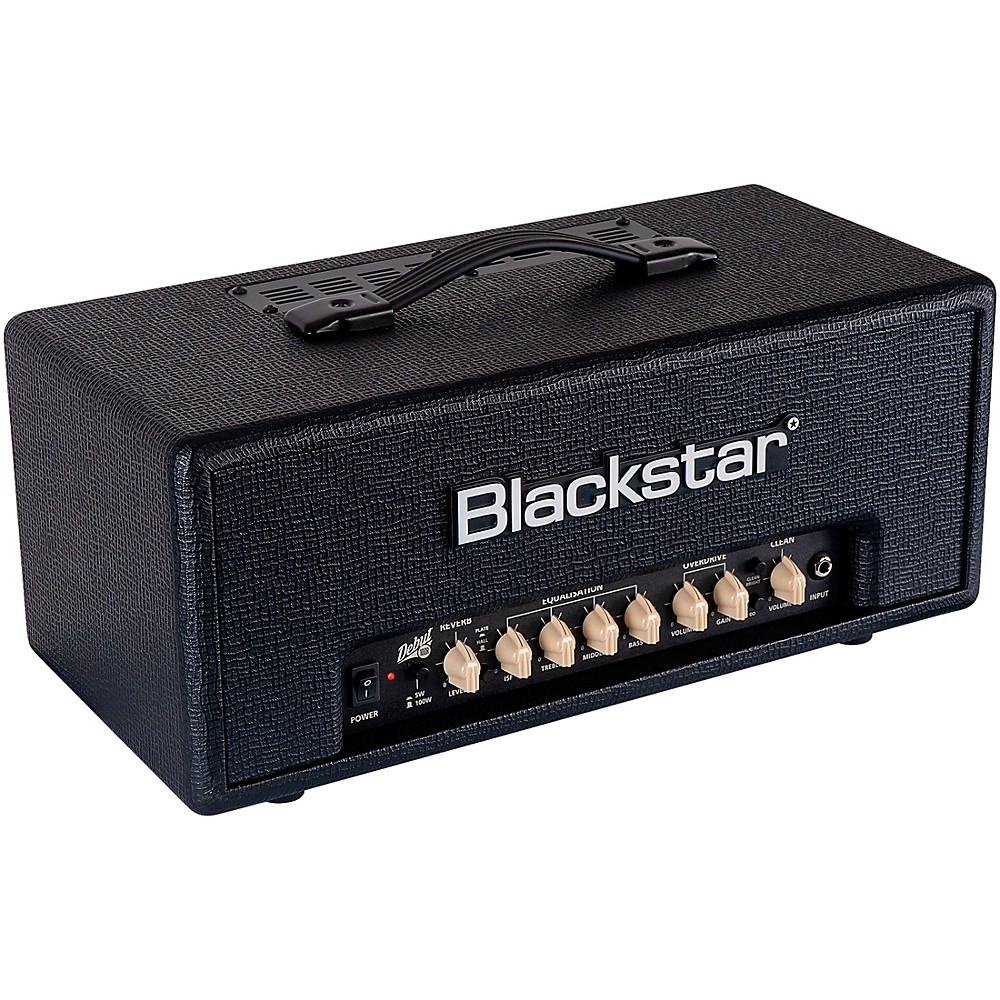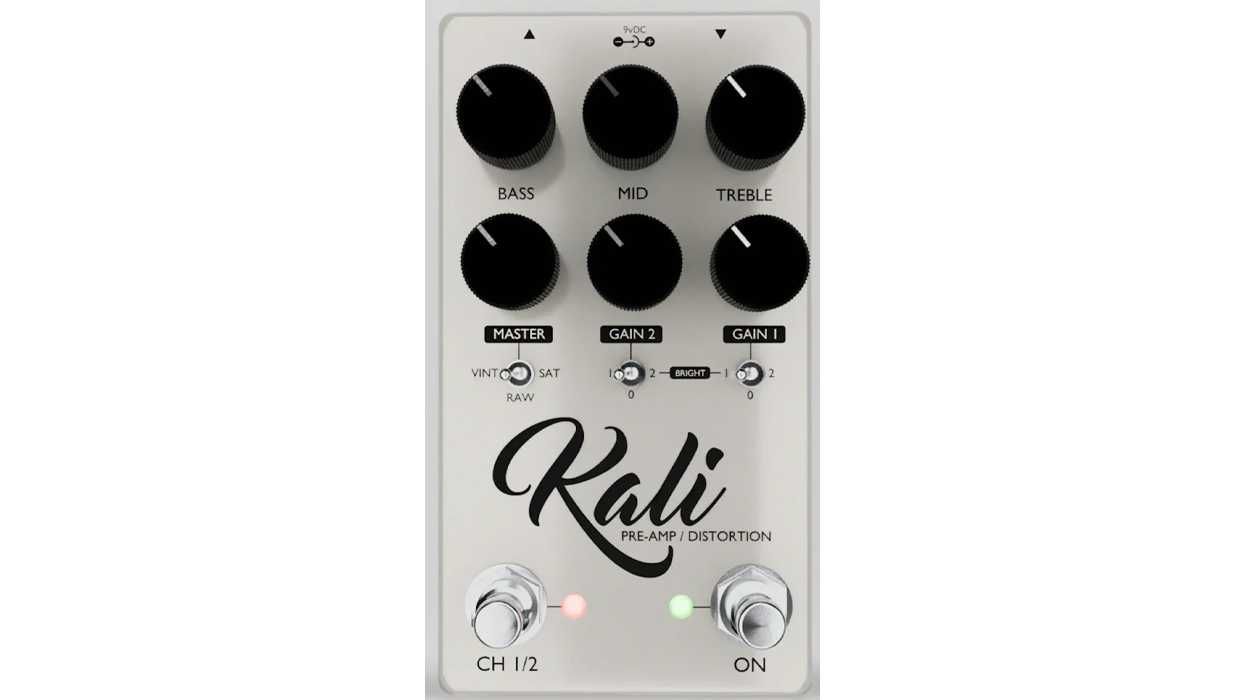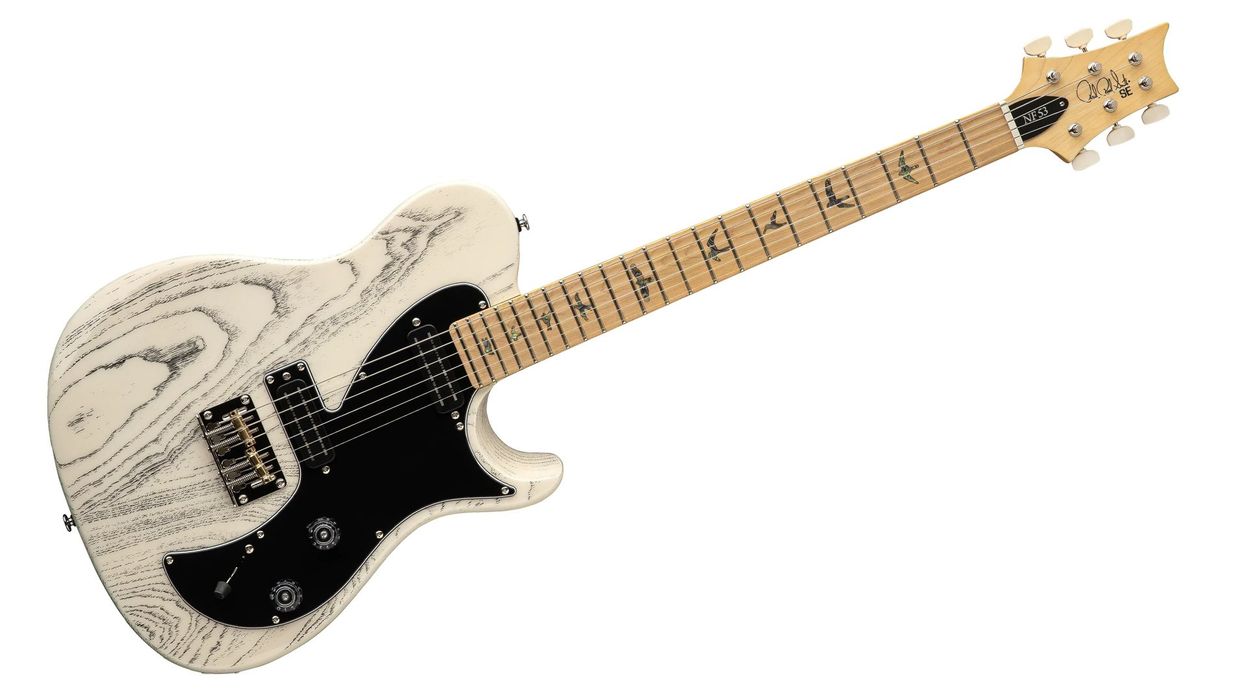PRS makes some of the best affordable electric guitars in the world. They also have a talent for making those instruments look expensive. They achieve this trick thanks to quality control standards and practices that better most companies at the accessible end of the price spectrum. But PRS also built their reputation on immaculately crafted and very exclusive guitars. And once that association is burned into the collective consciousness of the guitar playing public—and you figure out a way to cop high-end design cues in down-market versions—well, you can make an inexpensive guitar seem very expensive, indeed.
The $499 Indonesia-built PRS SE CE 24 Standard Satin does not have the advantage of a flame-maple top to give an upscale aura, like its bolt-on cousin the SE CE 24, but doesn’t need it. Because it takes about a minute of playing the SE CE 24 Standard Satin to feel and hear that it’s guided by the same playability-first design philosophies that make top-shelf PRS instruments coveted. There’s a lot of classic PRS essence in the SE CE 24 Standard Satin, and at 500 bucks in the year 2024, that is no mean feat.
The Best Deal Yet? PRS SE CE 24 Demo
Stirring Up Trouble
One really cool thing about a satin finish PRS is that, rather than compelling you to don kid gloves, it invites you play it hard, like a battered old Les Paul Jr. or Telecaster might. Like those guitars, the SE CE 24 Standard Satin is an elemental instrument. There is little in the way of bells and whistles to distract you from picking. Instead, the straight-ahead nature of the design tends to reinforce the sense of how well-made the SE CE 24 Standard Satin is.
Even with the $499 price in mind, I will surprise exactly no one by mentioning that this PRS is, more or less, flawlessly put together. Look all you want—you won’t find anything misaligned, sloppily cut, or improperly glued anywhere. The bolt-on maple neck sits snugly in its pocket and the fretwork is every bit as nice as what you see on guitars much further up the food chain. There’s no fret buzz, and yet the action is low and slinky. The guitar rings like it’s a living thing, too. Strum a first-position E chord and you’ll feel the resonance in your ribs.
When you examine the SE CE 24 Standard Satin at even closer range, you find details that charm and impress. Where an expensive U.S.-built PRS wouldn’t leave the factory with anything other than a perfectly bookmatched mahogany body, the SE CE 24 Standard Satin’s all-mahogany body is made up of at least three sections which look fairly asymmetric in size. The grain looks pretty different at the joins, too. But that does nothing to detract from the pervading sense of craft. In fact, it heightens the SE CE 24 Standard Satin’s all-business, proletarian essence—a nice thing to see in a guitar from a brand which, historically, is associated with fancy appointments.
Other construction details leave you appreciative of PRS’ commitment to advancing electric guitar design rather than being bound to tradition. The PRS Patented Tremolo vibrato system is as smooth as molasses and stable even under vicious handling (a specialty of mine). Among guitars in this price class, I’ve grown to expect vibratos that fly wildly out of tune if you sneeze, with arms that constantly flop and dangle out of reach. Even on this import version of the system, the ridiculously simple solution of a non-threaded arm that sits in a plastic sleeve works without fail. You can situate it at various heights and swing it into any position that feels comfortable, and it will stay there. It’s a fix for the inexpensive vibrato blues that many manufacturers would be wise to study. The dark-hued rosewood fretboard, too, seems luxurious for a $500 guitar. Most guitars in this price zone pivoted to paler Indian Laurel for fretboards some time ago.
Rowdy, Raw, and Refined
I instinctively get apprehensive when I see uncovered humbuckers in an affordable guitar. Something about encountering decades worth of ghastly, harsh, thin, and nasty entry-level humbuckers will do that to you. The 85/15 “S” pickups in our review guitar go a long way toward alleviating this paranoia. In humbucker mode, the bridge pickup is balanced. There is a midrange bump that can lend just a touch of harmonic clutter and some stridency when you play chords at full volume. But lead lines sing with a heated energy that has a nice touch of silkiness around the edges. Volume and tone attenuation are effective cures, too, if the midrange is too hot for your taste. That midrange emphasis is less flattering in the neck pickup, at least when you play big rock chords. But melodic fingerpicking and a dynamic touch summon a sweet side, and, as with the bridge pickup, single notes from the 1st through 3rd strings in particular have a satisfying, ringing presence that is not at all harsh. Combined pickup tones are especially nice. They’re springy, airy, and at times have an almost-Stratocaster-but-fatter ring.
Speaking of Stratocaster tones, there’s more than a little taste of Straty-ness in the split-coil voices. In the bridge position, the fundamental split-coil tone rings a lot like a hot Strat pickup, but with less bite and muscle than a Telecaster bridge. The neck pickup comes off as a bit rowdy and exhibits more overdrive characteristics than a Strat neck pickup, but is very responsive to a nudge to the volume control if you want clear, less-driven tones. The middle position in split-coil mode, which combines the centermost coils of the two pickups, is the most interesting twist on the instrument’s inner Stratocaster spirit. It generates a thick and muscular but clear and snappy version of a Strat’s out-of-phase tones. That’s not a sound I use a lot, but I love the PRS’s take on that tonality. Each split-coil position, by the way, exhibits very little volume loss when compared to humbucker mode.
The Verdict
We probably sound like a busted record at this point—going on about how PRS tends to overachieve in the affordable price category. But, hey, don’t look at us. It’s PRS’s fault. And until they start building junk we’ll keep on raving. The careful construction, useful and flexible coil-splitting capacity, reliable, smart vibrato, and all-around stability make this instrument an uncommon value. And you could very easily spend a lot more money and fail to get a guitar that does as much, and does it as well, as this straight-ahead, no-frills machine.




















